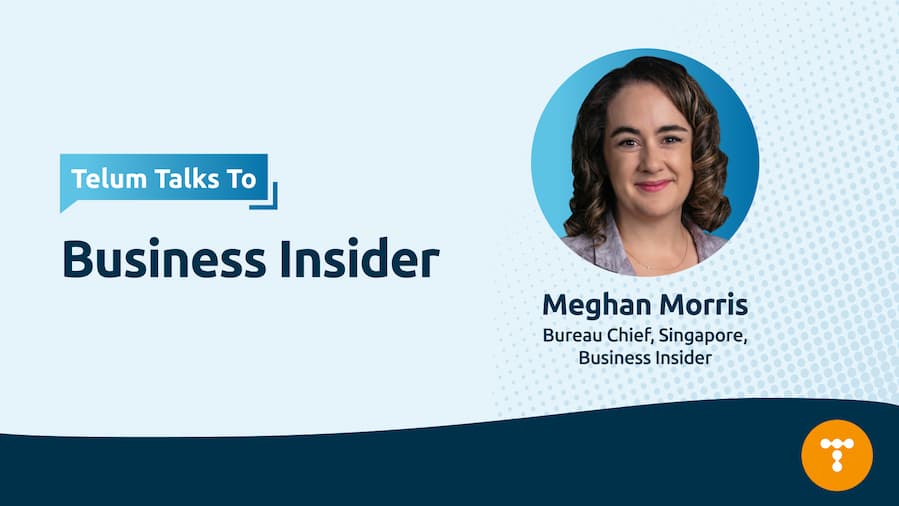According to data from the National Bureau of Statistics of China, the population aged 60 and above in Mainland China has reached 22 per cent of the total population in 2024, a percentage projected to increase in the coming decades. This demographic shift mirrors trends across APAC: all countries are ageing at an unprecedented pace, based on a report by the Economic and Social Commission for Asia and the Pacific.
With generous retirement benefits and rising standards of health and wealth, the elderly in cities like Shanghai and Hong Kong are changing the concept of ageing, prompting both the government and private sector to invest in the growing silver market.
Challenging stereotypes
“We often perceive the silver generation through a lens of pessimism: inactive and vulnerable. However, the reality is quite different,” said Wendy Yu, a senior communications professional based in Shanghai.
She painted a different picture of the region's active elders - one that reflects independence, influence, and even trendsetting. "The older demographic also has emotional needs and wants to feel valued and connected, just like any other generation", observed Wendy. For instance, she shared, the silver generation in Mainland China is carving out their own communities, and with the help of digital media, are jumping onto, if not themselves creating, new trends.
As this cohort grows in influence, brands are beginning to rethink their strategies, recognising that the elderly are not just passive consumers, but an engaged, discerning audience with specific needs and wants.
Tapping into the silver economy
Brands are already responding to this demographic shift. One of which is Maxim’s Group, who is actively reevaluating how it engages with the elderly market.
Una Lau, Head of Corporate Communications & Public Relations at the Hong Kong-based food and beverage company, put it succinctly: “Just as Gen Z represents future growth potential, the elderly represent a crucial market that necessitates innovative, tailored business strategies.”
With an emphasis on improving the elderly’s quality of life rather than merely extending it, Maxim’s has rolled out projects to foster silver productivity and consumption. This includes the active employment of those above the age of 60, a range of dining discounts offered to senior citizens, as well as campaigns to drive age-friendly culinary experiences.
These initiatives all align with the HKSAR Government’s efforts to promote the silver economy, emphasising the need to address the elderly’s aspirations and challenges. The recent rollout of ‘GENTLEMEAL,’ a soft meal brand, follows a standardised framework developed by the Hong Kong Council of Social Service for preparing food for those with swallowing difficulties, Una pointed out.
Decoding communication with the silver generation
This shift in business strategy to pay more attention to mature consumers also requires a thoughtful approach in communication - engaging the elderly isn’t the same as speaking to Gen Z or millennials after all.
With initiatives like GENTLEMEAL, Una highlighted that Maxim's PR messaging focuses on empathy, trust, and direct engagement. She explained how the brand ensures it understands the authentic needs of its target audience: “Our team visited numerous care homes to collect feedback. This direct interaction helped us understand their eating habits, dietary needs, and aesthetic preferences, which were instrumental in refining our offerings.”
This approach contrasts with the F&B company’s strategies for younger audiences. While Maxim's communication with the elderly leans on themes of nurture and support, its messages to younger audiences are designed to inspire and innovate. For instance, communicating to the more digitally fluent Gen Z involves leveraging social media and trends, as well as engagement through sustainability initiatives and creative experiences.
In Mainland China, Wendy brought out a different consideration and stressed the importance of recognising that the elderly are not a monolithic group, especially in a market where the elderly population is as diverse as it is vast. "Here in Mainland China, senior citizens' employment status, their work industry, and their educational backgrounds all translate to various behaviours and needs."
During a campaign for GSK Vaccines, which targeted those over the age of 50 regardless of economic status and geographic location, Wendy discovered that older adults in top-tier cities are more often independent decision-makers due to their higher spending capacity and more formal educational backgrounds.
“There is a growing trend of silver-haired retirees continuing their education at universities and maintaining active social networks. As a result, communication strategies in these urban areas can leverage travel agencies and educational institutions to relay PR messages effectively,” she commented.
However, in lower-tier cities and rural areas, Wendy observed that older relatives tend to prioritise the opinions of their children and grandchildren, making the senior population relatively dependent decision-makers. In this context, she focused on engaging and educating younger family members to encourage vaccination amongst older members of the household.
Blending digital reach with traditional communications
While social media are often seen as the go-to channel for engaging younger audiences, the platform is also becoming increasingly relevant for reaching older adults. As Una pointed out, “there is a notable increase in adoption and sustained engagement with social media platforms like Facebook and YouTube by Hong Kong’s elderly, which they use to stay connected with friends and family.”
On the other hand, upholding credible communication in the social media space must be stressed, considering social media’s tendency to become breeding grounds for misinformation. Wendy, who had been overseeing healthcare comms for the past six years, emphasised that social media candidates for PR partnerships must undergo careful selection processes.
“Today, many elderly people obtain news from short-form videos. When it comes to influencer PR, credibility is taken very seriously. To educate our target audience on disease prevention through vaccination, we collaborate exclusively with certified healthcare professionals on Douyin to ensure the utmost integrity and trust in our messaging.”
Despite the rise of digital platforms, traditional channels such as television, radio, and print media remain highly preferred by the elderly in Hong Kong, said Una. Wendy observed a similar trend in Mainland China, where many of the older generation continue to watch news on TV. Furthermore, elderly people with more professional backgrounds still read newspapers habitually.
"Traditional media will remain a vital communication avenue for as long as the target audience engages with mainstream media," she commented.
Una added that when selecting a media mix, the key is to base the choice on the specific nature of the products or services being marketed. "Adopting a tailored approach while considering a range of options is crucial to effectively reaching diverse audiences."
Building trust through understanding
Tailored messaging and choosing suitable communication channels may be imperatives, but Una emphasised that having a deep understanding of the elderly’s needs remains the defining factor in building trust with the silver generation.
“Initiatives like the GENTLEMEAL project, where we engaged directly with elderly residents in care homes, not only reflect our commitment to authenticity but also demonstrate our dedication to truly understanding their daily realities, preferences, and challenges,” she said.
Wendy echoed her sentiment on building trust upon genuine understanding. “I don’t believe there is a one-size-fits-all solution when it comes to building and maintaining trust with the Chinese elderly. Before nailing down a communication strategy or campaign narrative, invest time and money researching this demographic.
"Only when you dive deep into their behaviour will you be able to demonstrate that you understand and respect their needs and wants.”
Una Lau is Head of Corporate Communications & Public Relations at Maxim’s Group. A seasoned comms and public affairs professional based in Hong Kong, she previously held senior positions at companies including The Hong Kong Polytechnic University, Ocean Park Corporation, and Sino Group.
Wendy Yu is a senior communications professional based in Shanghai. Her portfolio spans both in-house and agency-side roles, including six years of leading We. Red Bridge’s healthcare practice and in-house experience at Henkel.
.jpg)
.jpg)

